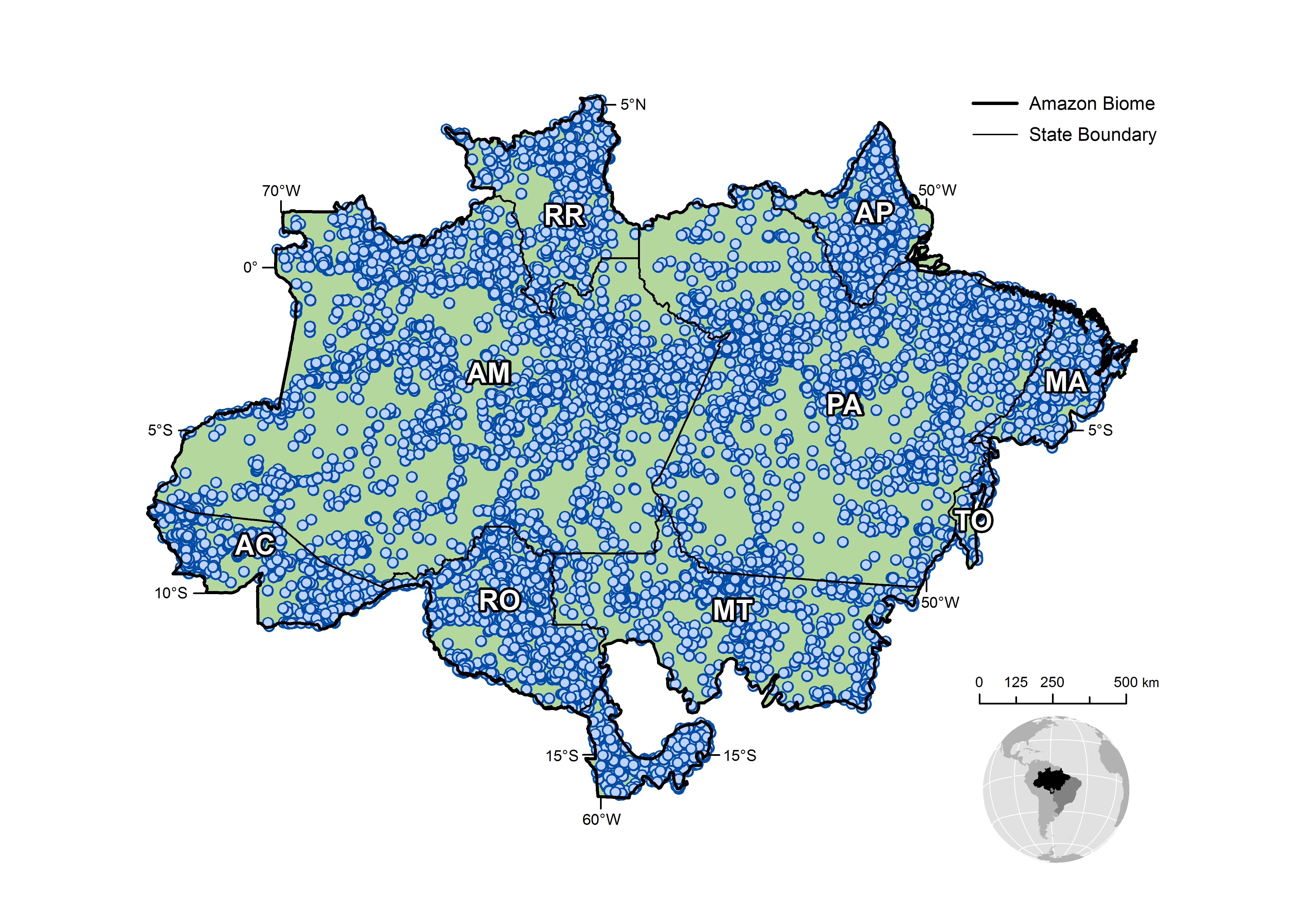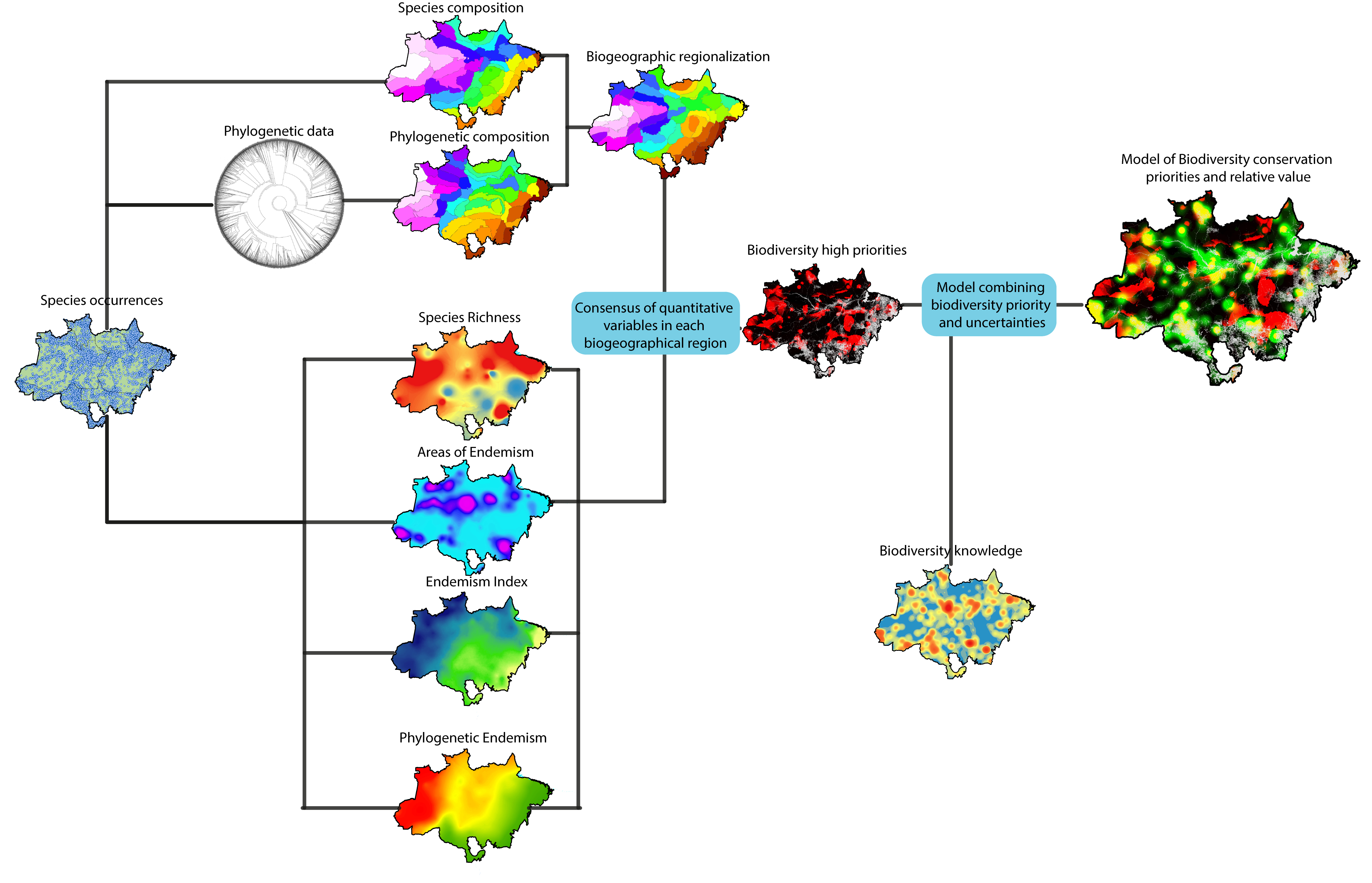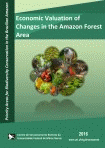We used the most comprehensive dataset on biodiversity to date to identify the priority areas for biodiversity conservation in the Brazilian Amazon.
Our dataset includes occurrence data on terrestrial angiosperm, arthropods, and vertebrates (see figure below). In the angiosperm groups, we included only the most speciose (with high number of species) and widely distributed families in Brazil: Asteraceae, Bromeliaceae, Fabaceae, Melastomataceae, Myrtaceae, Orchidaceae, Poaceae, and Rubiaceae. For the arthropods, we compiled data on bees, spiders, polydesmid millipedes, flies, tiger moths, dragonflies, and Orthoptera. Vertebrates include birds, mammals, and amphibians.
We compiled a comprehensive dataset including several taxonomic groups to derive a series of biodiversity variables to map priority areas for conservation in the Brazilian Amazon. Our major set of quantitative variables includes species richness, area of endemism, phylogenetic endemism, and endemicity (See table below). Data on species occurrence for all groups were used for estimating these variables. We selected these variables because they refer to different biodiversity aspects and thus their correlation is low. These quantitative variables were then integrated based on phylogenic composition and species composition criteria (see figures below). Species richness, endemism, and areas of endemism have equal weights in mapping priority for biodiversity conservation based on consensus of Species Composition and Phylogenetic Composition.
Species richness, endemism, and areas of endemism have equal weights in model. Conservation priorities analysis consists of summing the quantitative variables in each region of the map of consensus of Species composition and Phylogenetic composition. All species and groups were included in the analysis.
See detailed methodology by accessing the full report.



